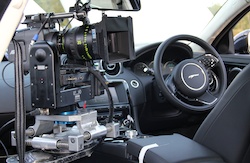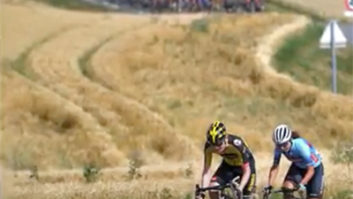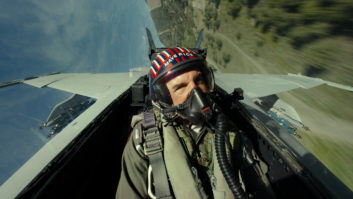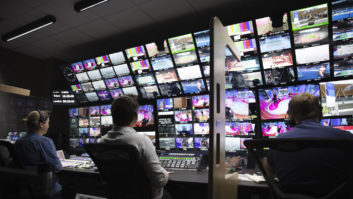
Bradley Engineering’s new U4-F remote pan and tilt head for digital cinema cameras was developed for the upcoming Bond movie, Skyfall, primarily for use in cars with the Alexa M split-head camera, but it could also have applications in sports production. It has 10 gears for very precise slow or fast movement, and uses a traditional style wheeled controller. What excited some visitors to IBC about it was how smooth it is, thanks to in-built processors, which would make it perfect for an object tracking system. For sports applications, “our head could be used to automatically have a camera smoothly follow a player around a pitch,” said the company’s founder, David Bradley. “This hasn’t really been possible [before], because in order to make it smooth you have to have a very high data rate, but our head takes care of it. It works out the positions in between and gives a very smooth move.” Also new is Bradley’s high-speed Skytrack Lite, which was originally designed for possible use on a natural history production, as it is small and can be battery powered. However, the first one has been sold to Remote Camera Solutions, and has been used for ITV and Sky Sports, including the Speedway World Championships, where its top speed of 75mph (120kph) enabled it to keep up with action. The dolly alone weighs about 4kg. Add a GY236 gyroscopic remote head and it weighs about 9kg (plus batteries and downlink). But it would be possible to order a lighter, more basic version. “It is simple, lightweight and easily portable,” said Rory Watson, head of special projects, Bradley Engineering. At IBC, Bradley also showed two of the Torchcams it developed for the BBC to cover the Olympic Torch Relay for some 8,000 miles (almost 13,000km) around the UK. It made four of them: a Gimball 2 (self-levelling) that was mounted on top of the OB trailer (converted horse box) for wide shots; a smaller GY236 head, used for long-range shots of the runners; and two HD10 fixed cameras. – David Foxwww.bradeng.com







